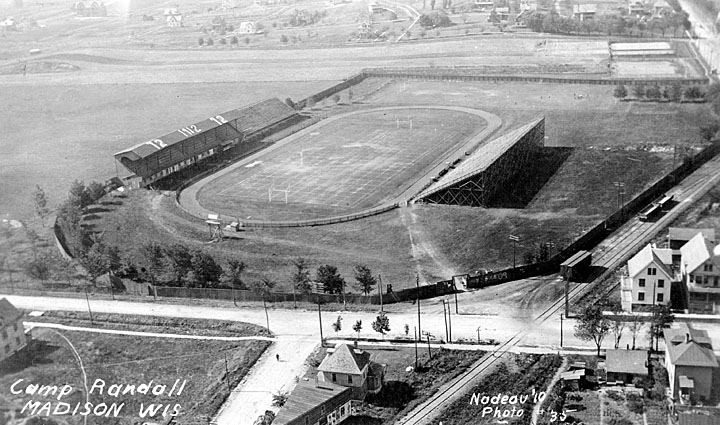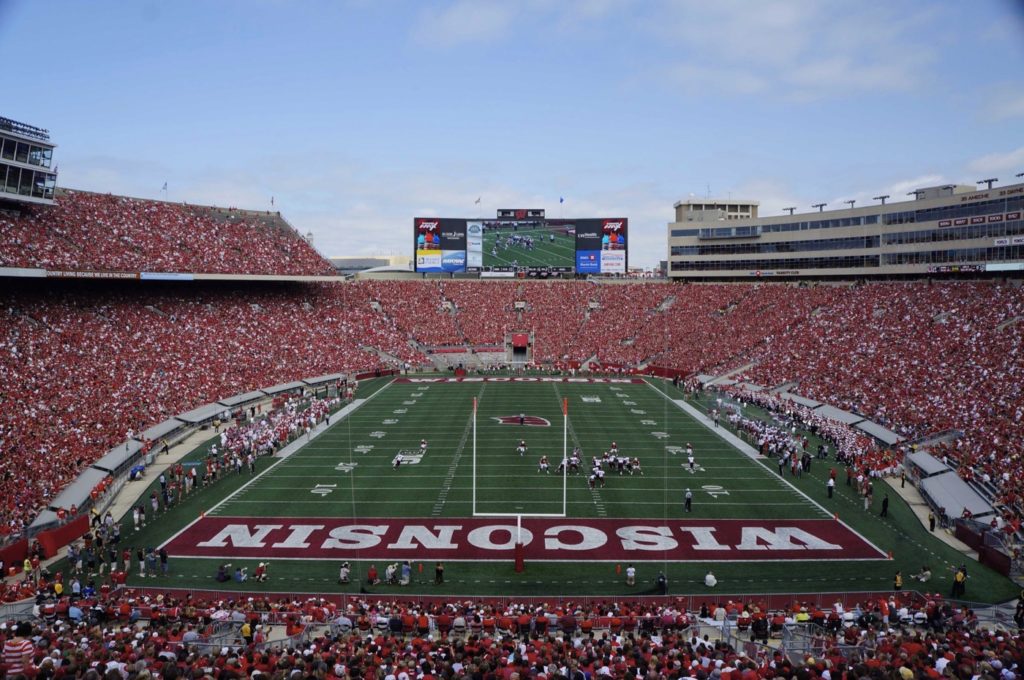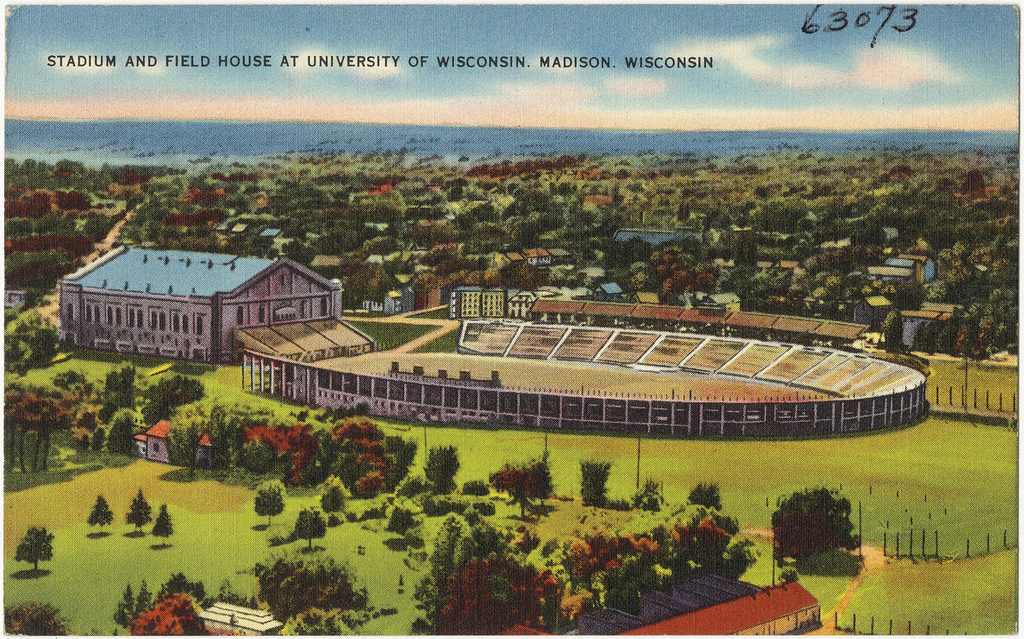It’s not the oldest college-football stadium still in use, but the history of Camp Randall Stadium at the University of Wisconsin is worth noting, as the school honors 100 years of Badger football at a classic horseshoe stadium.
The oldest stadium in use in the Big Ten, the stadium draws its name from its location, on the site of Camp Randall, a Union Army training camp during the Civil War. It was a traditional gathering spot for the small but lively city of Madison, owned by the Wisconsin State Agricultural Society and originally used for events like state fairs and races. When the Civil War broke out, the grounds were used for a Union Army training camp, Camp Randall, beginning on May 1, 1861. Part of the stadium grounds is devoted to remnants of that era, and many fans will enter the stadium via a commemorative and iconic Camp Randall arch.
When the university sought a permanent home, the state legislature was petitioned for funding—which came through in 1915. After a few setbacks, including the collapse of bleachers when the dreaded University of Minnesota Golden Gophers visited on Nov. 20, 1915, the concrete structure officially opened in 1917, first with a Badger win over Beloit College on Oct. 6and then officially on November 3, 1917 with the aforementioned Gophers in town. The Badgers were triumphant, 10-7.
Even then Camp Randall Stadium was a mix of old and new. In 1917, Camp Randall Stadium featured seating for 7,500 on a concrete base, and seating for 3,000 more on wooden bleachers reclaimed from the old facility. (Ironically, those wooden bleachers would later burn down, leading the construction of more permanent seating.) The development of Camp Randall Stadium would occur in stages, with major expansions happening in 1921 (more permanent seating), 1924 (completion of the horseshoe with seating on all sides of the field), 1940 (additional seating and a new dorm funded by the Works Progress Administration), 1951 (10,000 seats added), 1958 (field lowered to add 10,000 more seats, with track eliminated), 1966 (upper deck added, along with new press box) and 2004 (luxury box structure added).
For many of those years, Camp Randall Stadium wasn’t the biggest or best Big Ten stadium out there: it’s hard to compete with facilities at the University of Michigan and Ohio State, or even the University of Minnesota’s classic old Memorial Stadium. But in the 1960s a series of UW athletic directors—Elroy Hirsch, Pat Richter, Barry Alvarez—took specific steps to upgrade both the stadium and the game-day experience. It was good for the program and good for the school: the UW athletic department contributes money back into the college general fund and requires no subsidies, partly due to football revenues.
On the one hand, this is a classic college horseshoe stadium, with the ambiance of having the Field House at the top of the horseshoe. The neighborhood presence makes for a great game-day experience, even if the stadium architecture is a little bland: it began life as a concrete structure, and to this day concrete dominates the stadium finishes. Even when there’s a sellout crowd in the house (defined as 80,321 fans), the worst seats in the house in the upper deck provide a decent view of the action. The University of Wisconsin puts on a great show, ranging from plenty of pregame festivities and parties across the west end of campus to the Fifth Quarter, a 20-minute presentation from the marching band after the game. (The Fifth Quarter is practical as well: it slows the flow of fans leaving games.) And let’s not forget the playing of Jump Around between the third and fourth quarters: the place literally rocks with tens of thousands of fans jumping around.
So, after 100 years, let’s recognize Camp Randall Stadium for providing a great game-day environment, fueled by the enthusiasm of Badger football fans. And while there are plans to upgrade that game-day environment in future years, it’s hard to see much changing when it comes to Badger football at Camp Randall Stadium.
Vintage photos courtesy Wisconsin Historical Society; current Camp Randall image courtesy University of Wisconsin.
This article first appeared in the weekly Football Stadium Digest newsletter. Are you a subscriber? It’s free, and you’ll see features like this before they appear on the Web. Go here to subscribe to the Football Stadium Digest newsletter.




